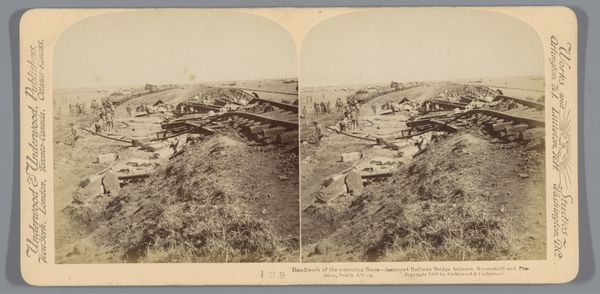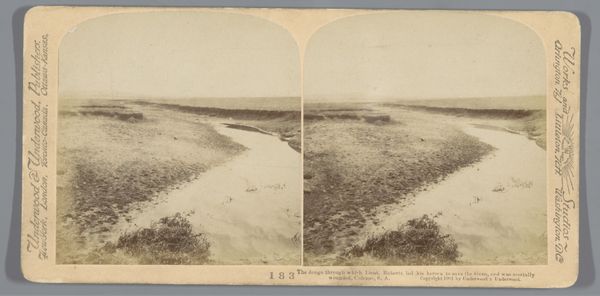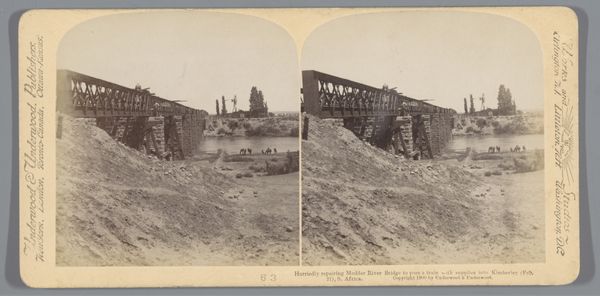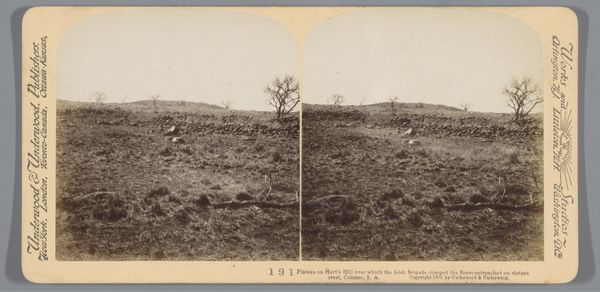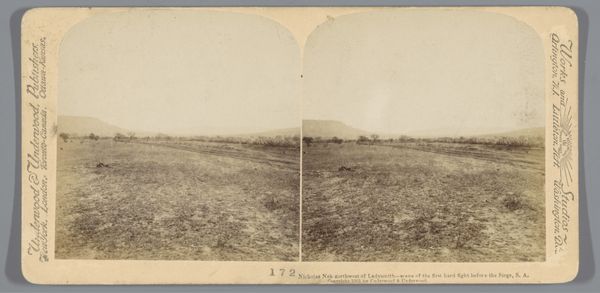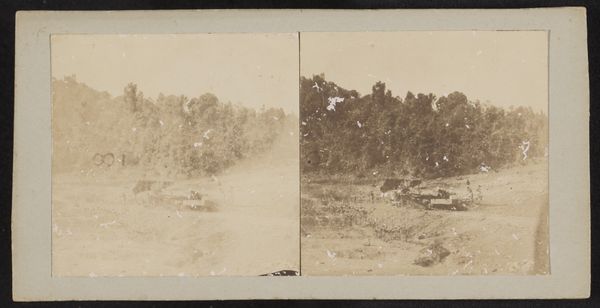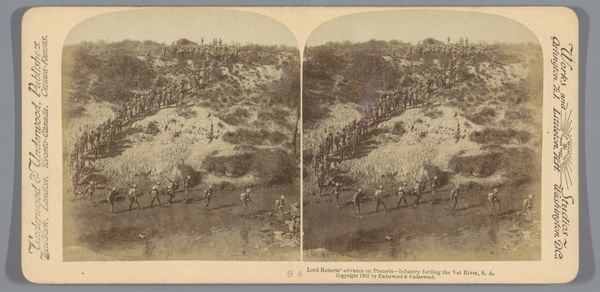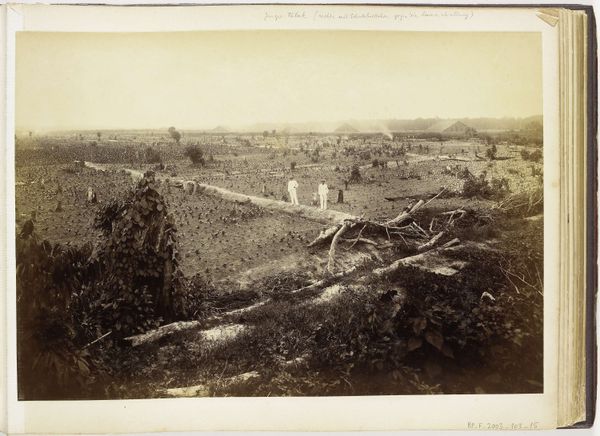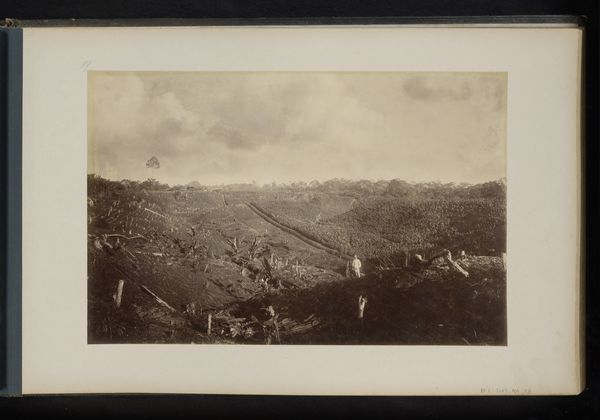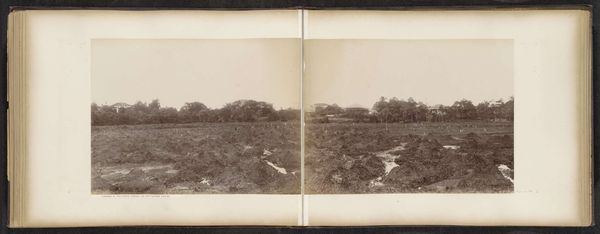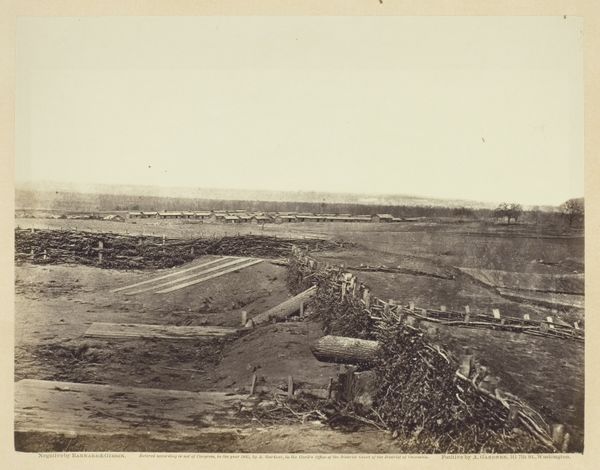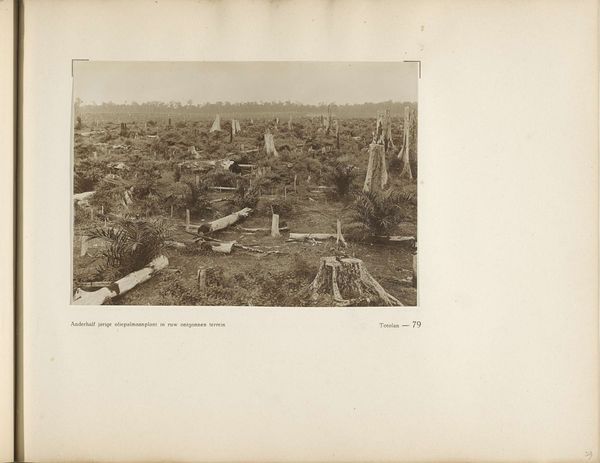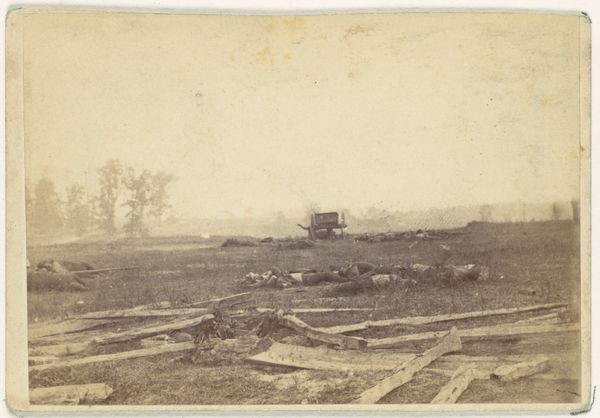
Gezicht op de rivier de Tugela in Zuid-Afrika waar tijdens de Tweede Boerenoorlog is gevochten 1901
0:00
0:00
print, photography, gelatin-silver-print, albumen-print
# print
#
landscape
#
river
#
photography
#
coloured pencil
#
gelatin-silver-print
#
albumen-print
Dimensions: height 88 mm, width 178 mm
Copyright: Rijks Museum: Open Domain
Curator: Let’s turn our attention to this striking albumen print by Underwood & Underwood, a stereoscopic view titled “Gezicht op de rivier de Tugela in Zuid-Afrika waar tijdens de Tweede Boerenoorlog is gevochten," created in 1901. What are your immediate thoughts? Editor: Stark. And still. It feels heavy, grounded. The dense layering of browns and muted grays creates a landscape almost devoid of hope, dominated by the harsh textures of rock and scrub. The river itself seems almost reluctant to flow. Curator: That stillness is potent, isn’t it? Tugela River wasn’t just any river; it was a strategically significant site during the Second Boer War. The very ground here holds the memory of conflict. Note the almost clinical composition—the way the river bisects the scene, leading the eye towards a distant horizon. Underwood & Underwood, while commercial photographers, were masterful at framing narratives of their time. Editor: Absolutely. Semiotically, the river itself can be read as a division, not just geographically, but perhaps culturally, or even morally, within the context of the Boer War. The formal elements, the dark earth in the foreground and pale sky above, seem to reinforce this sense of opposing forces. Curator: It’s interesting you point out the division. Water often represents purification and rebirth, but here, channeled amidst conflict, it presents more as a barrier. Also consider how the panoramic format compresses the distance, bringing the horizon almost oppressively close. The effect feels both vast and claustrophobic. Editor: Exactly, that panoramic compression coupled with the limited tonal range works to flatten the pictorial space. And with so much middle ground occupied by those jagged rocks in the riverbed, the effect on the eye is subtly destabilizing. A very modern sentiment perhaps, considering the image's historical moment. Curator: Indeed. A destabilization reflecting the broader anxieties of empire at the turn of the century? It certainly offers a potent image for reflection. Editor: Agreed. Analyzing the image structure gives insight into how cultural anxieties and ideas of conflict materialize through photography.
Comments
No comments
Be the first to comment and join the conversation on the ultimate creative platform.
